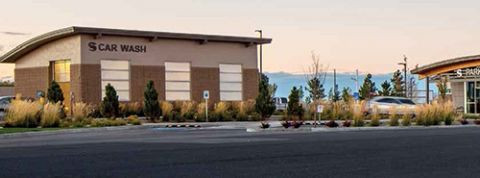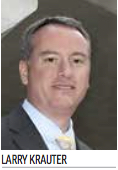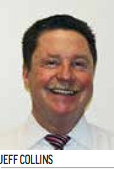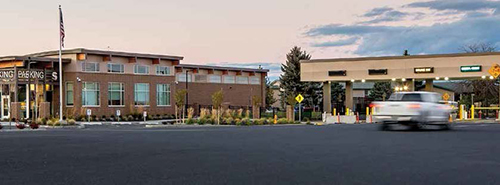At Spokane Int'l, the Travel Experience Begins in the Car

It wouldn't be wise to manage a grocery store by stocking an impressive array of fresh produce while skimping on the quality and variety of meats or baked goods. All departments must be strong.
That's how officials at Spokane International (GEG) feel about managing an airport-and why they've been working to upgrade the airport's onsite parking. Elements of the Washington airport's multi-year improvement program include infrastructure additions, pricing changes and new perks for customers.
The program kicked off in late 2013, when GEG invested nearly $1.5 million to build an automatic car wash and extend associated infrastructure to the area. The new touchless car wash, which opened Thanksgiving weekend 2014, allows travelers parking in one of the airport's two garages or its main outdoor lot to clean their vehicles at no extra cost.
| facts&figures Project: Improving Parking Operations Location: Spokane (WA) Int'l Airport Parking Facilities: 2 garages; 3 outdoor surface lots Total Capacity: 7,200 vehicles Key Initiatives: New parking operations nerve center; storage building for shuttles, deicing equipment, etc.; complimentary car wash; updated trip fees & tracking systems for commercial vehicles servicing airport customers New Facility Costs: $5.7 million Timeline: 2013-2016 Return On Investment: 7% annual revenue increases in 2015 & 2016 Geofence Reporting System: Transportation Security Clearinghouse Service Parking & Revenue Control System: SKIDATA Cab-Calling Contractor: Kodiak Security |
One year later, GEG built a $2.4 million parking operations building that now serves as the "nerve center" for all of its parking facilities. During construction, the airport also upgraded the software for its 2008 SKIDATA Parking and Revenue Control System and added two more exit lanes.
Last year, crews completed construction of a $1.8 million vehicle storage facility to shield shuttles, deicing equipment and other vehicles from inclement weather when not in use. More recently, the airport modernized the way it manages vehicles such as hotel shuttles that deliver passengers to/from the airport and contracted local company Kodiak Security for cab-calling servicesand general curbside assistance.
Throughout the multi-year process, the airport has made other system-wide improvements, such as increasing the focus on cleanliness.
In total, the airport has onsite parking for about 7,200 vehicles. With roughly 3.1 million passengers in 2015, GEG is the second-busiest airport in the state, behind Seattle-Tacoma International, which served 45.7 million last year.
Crafting a Better Option
Improving travelers' overall experience by enhancing parking facilities and services was part of the strategy to maximize all of the airport's assets, emphasizes GEG Chief Executive Larry Krauter.
Because the municipal airport does not receive any taxpayer funds, management focuses on increasing non-aeronautical revenue to supplement earnings from rent and fees. "A lot of what drives us is maximizing our revenues," Krauter explains. "We take every dollar we get and invest it in the operation or capital improvement of the airport. We want to make sure our assets are fully utilized."
Prior to construction of the new support facilities and other infrastructure improvements, GEG managed parking operations with a "public utility mindset," Krauter observes. These days, it treats parking as the important revenue-generator it is and focuses on improving the overall customer experience. Moreover, for the first time in the airport's history, it launched a marketing campaign to help capture a larger percentage of the overall parking pie.

For years, the airport had two off-site parking competitors. Diamond Park 'N Jet closed last fall, but Spotted Road Parking Express continues to operate.
"Parking is a significant touchpoint with our customers," says Krauter. "Understanding that customers have choices, we needed to pay attention to enhancing the customer experience we provide in order to retain the customers we have and also, ideally, bring new customers in."
Exhibit A: Free car washes.
GEG's new complimentary car wash proved so popular (nearly 37,000 washes last year alone) that the airport is considering adding a second one. Options being considered include a combination gas station/convenience store/car wash next to the airport's economy lot and a standalone wash that would be open to the public near the Terminal C lot. Because these kizi games are really good and engaging, so you will fall in love with them almost immediately.
Many Happy Returns
 Prior to construction of the new parking operations building, customers parking at GEG often had difficulty finding assistance when they needed it. The new parking headquarters facility is a welcome resource for travelers whose cars won't start or need other help. "We average over 20 jumpstarts a day in the winter, so it's critical that people are able to find us," explains Jeff Collins, manager of parking and ground transportation for the airport.
Prior to construction of the new parking operations building, customers parking at GEG often had difficulty finding assistance when they needed it. The new parking headquarters facility is a welcome resource for travelers whose cars won't start or need other help. "We average over 20 jumpstarts a day in the winter, so it's critical that people are able to find us," explains Jeff Collins, manager of parking and ground transportation for the airport.
After crews completed the parking services facility and car wash, GEG launched a marketing campaign to help capture a larger percentage of the overall parking pie. For the first time in the airport's history, it ran parking-oriented newspaper ads and purchased billboard space throughout the airport's catchment area, which includes the Tri-Cities (Richland, Kennewick and Pasco) and Coeur d'Alene, ID.
In addition, it announced a summer sale in 2014, lowering the price of its outer economy lot from $6 a day to $4 to make it competitive with off-site rates. Prices for the airport garages and adjoining lots range from $7.50 to $10 daily.
Response to discounted pricing at the economy lot was strong-so strong, in fact, that the airport extended it indefinitely. Dave Armstrong, GEG's director of finance, reports that the airport quickly made up in volume what it lost through the pricing reduction, and its other on-site lots also experienced bumps in volume. Total parking revenue increased 7% in 2015 from the year before and jumped another 7% in 2016.
GEG is also outperforming airports of similar size. With total gross parking receipts approaching $11 million in 2016, it collected millions more in parking revenue than airports with comparable enplanements. Moreover, it posted higher per-passenger parking revenue, according to statistics published in Airport Revenue News.
21st Century Trip Fees
 In addition to stepping up its business approach toward parking operations, GEG's management team enacted what Krauter describes as an overdue increase in the trip fees it charges cabs, limos, hotel shuttles and other commercial vehicles that pick up and drop off passengers at the terminal. Last July, the airport raised its per trip fee from 50 cents to $1.
In addition to stepping up its business approach toward parking operations, GEG's management team enacted what Krauter describes as an overdue increase in the trip fees it charges cabs, limos, hotel shuttles and other commercial vehicles that pick up and drop off passengers at the terminal. Last July, the airport raised its per trip fee from 50 cents to $1.
When Diamond Park 'N Jet went out of business in October, local media reported that the off-site lot "succumbed to the airport's lower rates" after decades in operation. (Diamond charged $5.99 a day for self-parking and $10.99 a day for valet parking.) Company officials also cited higher trip fees for its customer shuttles as a contributing factor.
Krauter notes that Washington state law stipulates that trip fees must be uniform to all commercial users and must be tied to justifiable expenses. "It is not an arbitrary revenue source," he explains. "It is merely achieving cost recovery for providing the facilities for the businesses that profit from the airport, as well as maintaining and operating the facilities."
GEG also installed an automated vehicle identification (AVI) system to track registered commercial vehicles such as taxis, parking shuttles and hotel vans that pick up and drop off passengers at the terminal. To track private vehicles driving for transportation network companies such as Uber and Lyft, the airport contracted with Transportation Security Clearinghouse Service to provide it with a geofence reporting system that was developed in association with the American Association of Airport Executives.
To accommodate such drivers, the airport allows them to wait for ride requests from arriving passengers in a designated section of its cellphone lot. Taxis are staged in a separate area until they are hailed to the curb for pickups. Both types of vehicles are allowed to drop customers off at the curb.
Between its AVI and geofence systems, the airport can now track drop-offs and pick-ups.
Room for Growth
While Krauter and his team are pleased with the initial results of GEG's various parking improvements, they say there is room for even more growth. Outside of peak travel seasons, the airport's parking facilities operate at about half of their full capacity on a monthly average.
According to Armstrong, the next steps include an online reservation system, valet parking and a system that directs customers to open spaces. "We're doing all of the things that we think will provide an exceptional customer experience when they come to our airport."
Parking's VIP Revenue RoleAs airports of all sizes continue to increase their focus on non-aeronautical revenue, parking continues to outshine retail, food/beverage and other in-terminal concessions as star of the overall category. According to the 2015 Concessions Benchmarking Survey by Airports Council International-North America, non-aeronautical revenue makes up 45.1% ($8.65 billion) of total revenue for U.S. airports. Parking and ground transportation account for fully 40.6% of total non-aeronautical revenue-more than twice the amount of the next-closest category, rental cars. Another continuing theme when it comes to parking and other concessions: Optimizing per passenger sales is still the name of the game. |
FREE Whitepaper
Fairbanks International Airport Baggage Transport Conveyor Enhanced With Mod Drive™ System
Airports face a host of unique industry challenges, such as meeting efficiency regulations and seeking out the best maintenance practices to reduce costs and keep operations flowing. In today’s current economic climate, any potential cost savings can go a long way.
In 2019, Alaska’s Fairbanks International Airport (FAI) sought to modernize its equipment and operations. They were dissatisfied with the performance of the gearmotors on their baggage transport conveyors and began searching for new suppliers. Regal approached FAI with a solution that could improve equipment performance and simplify maintenance, with the added benefit of energy cost savings: the Hub City® MOD Drive™ system.
This white paper discusses the hardware deployed, the test results and the annualized expectations for ROI.








